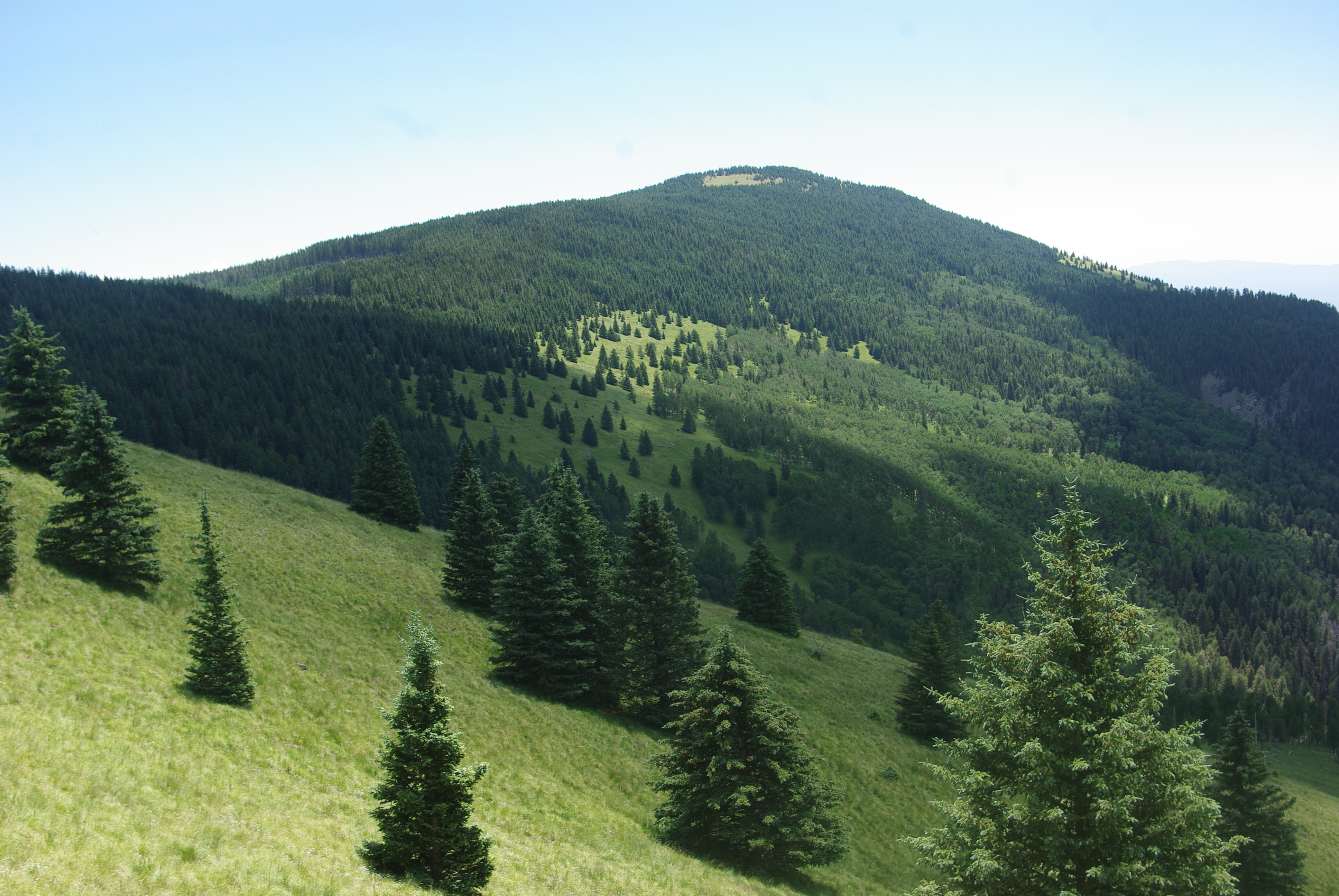Chicoma Mountain on:
[Wikipedia]
[Google]
[Amazon]
Chicoma Mountain (; also spelled Tschicoma or Tchicoma) is the highest point in the 
Jemez Mountains
The Jemez Mountains (, Tewa: ''Tsąmpiye'ip'įn'', Navajo: ''Dził Łizhinii'') are a group of mountains in Rio Arriba, Sandoval, and Los Alamos counties, New Mexico, United States.
Numerous Puebloan Indian tribes have lived in the Jemez Moun ...
, a prominent mountain range in the U.S. State
In the United States, a state is a constituent political entity, of which there are 50. Bound together in a political union, each state holds governmental jurisdiction over a separate and defined geographic territory where it shares its so ...
of New Mexico
New Mexico is a state in the Southwestern United States, Southwestern region of the United States. It is one of the Mountain States of the southern Rocky Mountains, sharing the Four Corners region with Utah, Colorado, and Arizona. It also ...
. The tree line
The tree line is the edge of a habitat at which trees are capable of growing and beyond which they are not. It is found at high elevations and high latitudes. Beyond the tree line, trees cannot tolerate the environmental conditions (usually low ...
in this area is exceptionally high, and the mountain is forested almost all the way to its summit which is conspicuous from the towns of Los Alamos, Santa Fe, and Española and other areas in the valley of the Rio Grande
The Rio Grande ( or ) in the United States or the Río Bravo (del Norte) in Mexico (), also known as Tó Ba'áadi in Navajo language, Navajo, is one of the principal rivers (along with the Colorado River) in the Southwestern United States a ...
in northern New Mexico. Like the rest of the Jemez, it is of volcanic
A volcano is commonly defined as a vent or fissure in the crust of a planetary-mass object, such as Earth, that allows hot lava, volcanic ash, and gases to escape from a magma chamber below the surface.
On Earth, volcanoes are most often fo ...
origin; it lies on the northeast rim of the Valles Caldera
The Valles Caldera (or Jemez Caldera) is a volcanic caldera in the Jemez Mountains of northern New Mexico. Hot springs, streams, fumaroles, natural gas seeps, and volcanic domes dot the caldera landscape. The highest point in the caldera is Red ...
, one of the best examples of a caldera
A caldera ( ) is a large cauldron-like hollow that forms shortly after the emptying of a magma chamber in a volcanic eruption. An eruption that ejects large volumes of magma over a short period of time can cause significant detriment to the str ...
in the United States.
The mountain is sacred to many of the Puebloan peoples
The Pueblo peoples are Native Americans in the Southwestern United States who share common agricultural, material, and religious practices. Among the currently inhabited Pueblos, Taos, San Ildefonso, Acoma, Zuni, and Hopi are some of the ...
of New Mexico, who traditionally regarded it as the "center of all." Much of it lies within the territory of the Santa Clara Pueblo
Santa Clara Pueblo (in Tewa: Khaʼpʼoe Ówîngeh ɑ̀ʔp’òː ʔówîŋgè "Singing Water Village", also known as "Village of Wild Roses" is a census-designated place (CDP) in Rio Arriba County, New Mexico, United States and a federally rec ...
. Access by hikers, hunters, and others, is correspondingly limited, although the summit can be reached via public lands on the north side. The Puye Cliff Dwellings
The Puye Cliff Dwellings are the ruins of an abandoned pueblo, located in Santa Clara Canyon on Santa Clara Pueblo Reservation land near Española, New Mexico. Established in the late 1200s or early 1300s and abandoned by about 1600, this is a ...
in Santa Clara Canyon are an archaeological site of some significance; however, the cliff dwellings are not near Chicoma. Puye Cliff Dwellings are accessible via NM 30 to NM 5, about 30 minutes south of Chicoma Mountain. The site is located on the pueblo's land on the east side of the mountain, and are sometimes open to the public for a fee.
See also
*Santa Fe National Forest
The Santa Fe National Forest is a protected national forest in northern New Mexico in the Southwestern United States. It was established in 1915 and covers . Elevations range from 5,300 feet (1600 m) to 13,103 feet (4000 m) at the su ...
References
External links
* * Jemez Mountains Mountains of New Mexico Religious places of the Indigenous peoples of North America Sacred mountains of the United States Landforms of Rio Arriba County, New Mexico Mountains of Rio Arriba County, New Mexico {{NewMexico-geo-stub